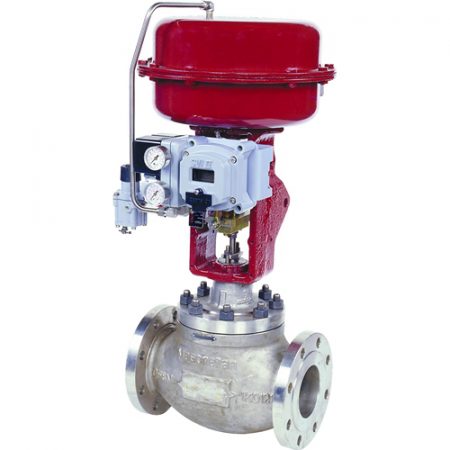Comprehending the Value of Control Valves in Process Automation
Comprehending the Value of Control Valves in Process Automation
Blog Article

Maximize Power Savings and Convenience With Advanced Structure Automation Controls
In the world of contemporary style and center monitoring, the assimilation of advanced structure automation regulates stands as a crucial development. The merging of innovation and sustainability has birthed a brand-new era where power performance, convenience optimization, and operational streamlining are no more distant aspirations but attainable realities. By using the power of automation, structures can adapt, respond, and evolve in methods that were when unimaginable. The potential for significant energy savings and boosted convenience is not simply a guarantee but a possibility waiting to be fulfilled. This paradigm change in structure administration holds the vital to unlocking a globe where environmental conscientiousness and owner well-being sympathetically coexist within the wall surfaces of our frameworks.
Energy Performance Conveniences
Power efficiency benefits can significantly reduce power intake and operational expenses in buildings. Energy-efficient systems, such as sophisticated structure automation controls, can enhance the use of sources like air conditioning, heating, and lights, leading to lower power expenses over time.
Additionally, boosted power efficiency can lengthen the lifespan of building tools and systems. By operating a lot more successfully, cooling and heating systems, lighting fixture, and various other structure elements experience less deterioration, causing reduced upkeep and replacement costs. Furthermore, energy-efficient buildings frequently command higher residential property values and rental prices, offering long-lasting economic benefits to proprietors.
Moreover, power performance can boost resident convenience and performance. Appropriately regulated indoor atmospheres with optimum lights and thermal problems produce a more conducive and enjoyable work area, leading to improved staff member satisfaction and performance. In general, the energy efficiency advantages connected with innovative building automation controls are complex, incorporating price savings, ecological stewardship, and occupant health.
Enhanced Comfort Control
Enhancing comfort control in building atmospheres needs an innovative combination of innovative automation systems for optimum resident health. By using advanced building automation controls, centers can tailor the interior environment to satisfy the certain requirements and preferences of passengers. control valves.
Improved convenience control goes past basic temperature changes. It consists of attributes such as tailored setups, tenancy sensing units, and all-natural light application to develop a vibrant and receptive atmosphere. By including these sophisticated controls, structures can not only enhance convenience yet also improve energy efficiency by enhancing system procedures based upon actual tenancy and use patterns. Ultimately, focusing on occupant comfort with sophisticated automation systems results in a more pleasurable and healthier interior setting.
Functional Performance Improvements

In addition, the application of real-time surveillance and analytics devices allows building drivers to identify power inadequacies and functional abnormalities immediately. By constantly checking power usage patterns and system performance metrics, modifications can be made in real-time to enhance power consumption and make certain peak operational you can try this out performance. control valves. Furthermore, including demand reaction techniques into building automation controls can even more enhance functional efficiency by dynamically changing power usage based upon grid problems and rates signals
Indoor Environment Optimization
Reliable interior climate optimization is an essential aspect of structure automation controls, guaranteeing owners' convenience and health while optimizing energy savings. By utilizing sophisticated sensors and controls, building automation systems can constantly check and adjust temperature, humidity levels, air top quality, and air flow to create an optimal interior environment. Keeping comfy and consistent conditions not just boosts owner contentment but additionally enhances performance and overall well-being.
Indoor climate optimization also plays an essential function in energy performance. By fine-tuning air conditioning, heating, and ventilation systems based on real-time information and occupancy patterns, constructing automation controls can significantly decrease energy intake - control valves. Applying strategies such as demand-controlled ventilation and thermal zoning can assist minimize power waste while guaranteeing that each location of the structure gets the essential conditioning.

Lasting Environment Production
Building automation controls not just optimize interior environment conditions for energy effectiveness and resident official source comfort yet also lay the structure for creating a lasting environment with calculated management of systems and resources. By incorporating innovative building automation technologies, such as sensors, actuators, and intelligent software program, centers can monitor and adjust energy usage in real-time to minimize waste and decrease their carbon footprint. These systems allow anticipating maintenance, recognizing potential concerns before they rise and maximizing tools performance to boost long life and efficiency.
Furthermore, sustainable atmosphere development prolongs beyond power administration to include water conservation, waste decrease, and interior air high quality improvement. Building automation controls can manage water usage, discover leaks, and ensure correct garbage disposal methods, adding to total sustainability initiatives. In addition, by managing and monitoring ventilation and filtration systems, these technologies enhance passenger health and performance while lowering power consumption connected with heating and cooling procedures.
Verdict
To conclude, advanced structure automation regulates offer significant benefits in terms of power cost savings, comfort control, operational efficiency, interior climate optimization, and producing a lasting environment. By carrying out these controls, buildings can accomplish optimum performance while minimizing power consumption and top article boosting occupant convenience. It is evident that using advanced automation innovation is essential in boosting structure performance and creating a more lasting future.
Energy performance advantages can considerably reduce energy intake and functional costs in buildings. Generally, the power performance benefits connected with advanced structure automation controls are multifaceted, including expense financial savings, ecological stewardship, and occupant wellness.
Furthermore, including need feedback strategies right into structure automation controls can further improve functional performance by dynamically readjusting energy use based on grid conditions and pricing signals.
Structure automation controls not just optimize indoor climate conditions for energy efficiency and occupant convenience however likewise lay the foundation for developing a sustainable atmosphere with critical monitoring of sources and systems.In conclusion, progressed building automation controls deal considerable advantages in terms of power cost savings, convenience control, functional effectiveness, interior environment optimization, and creating a lasting environment.
Report this page